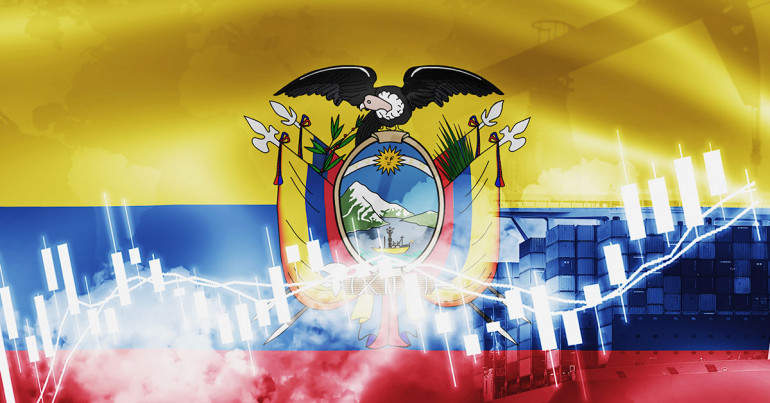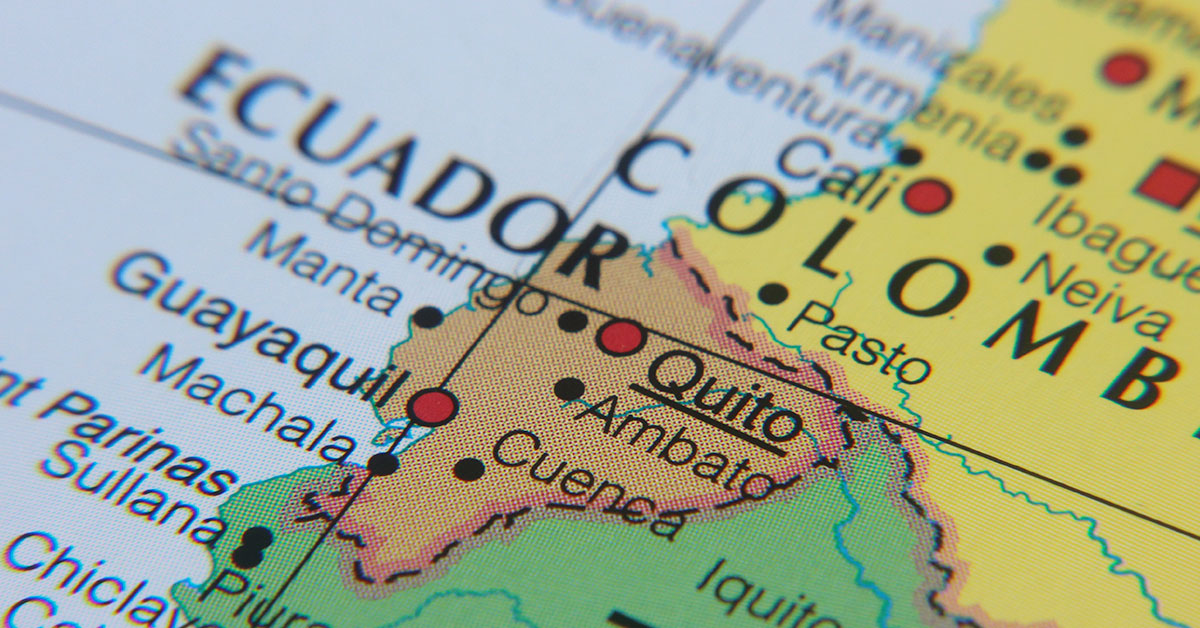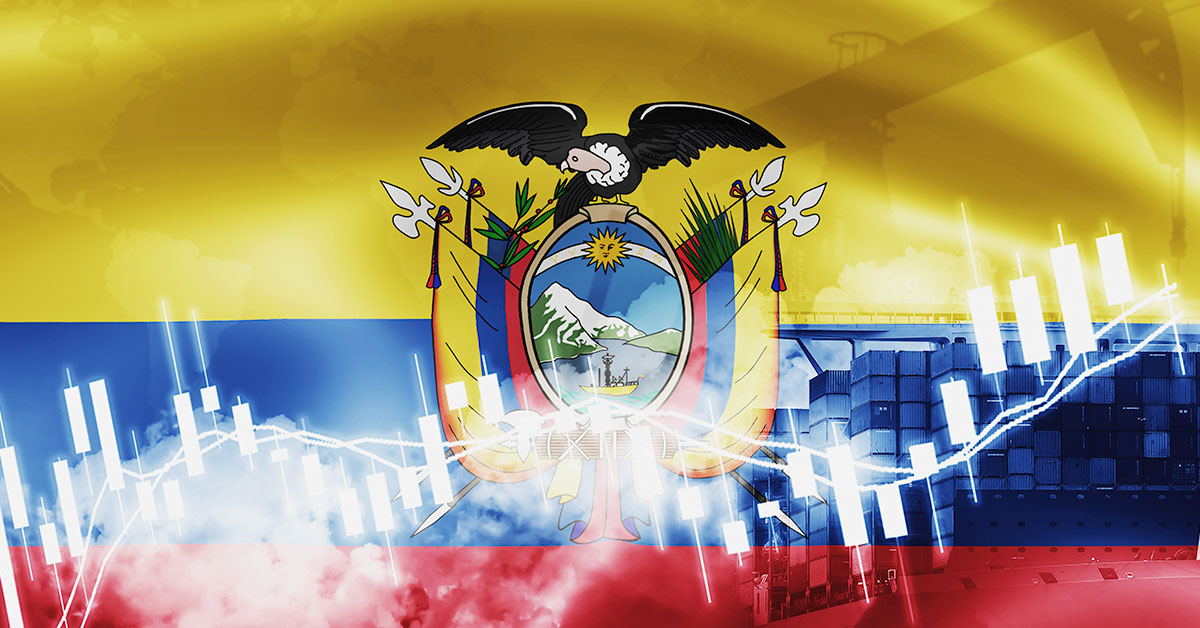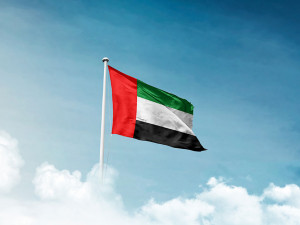
Ecuador’s economic outlook for 2025 is one of a need for resilience and transformation, at a glance. The country finds itself at an inflection point, balancing growth aspirations with significant challenges, including many of the global economic shifts we’ve seen in the past year, alterations in political dynamics, and environmental priorities. Analysts can be cautiously optimistic about the future, with moderate growth, stable inflation, and financial reforms in progress. However, to ensure long-term prosperity, Ecuador must address underlying structural issues and external vulnerabilities.
Economic Growth in Ecuador
Ecuador’s economy has been tied fairly majorly to its natural resources, particularly oil, which accounts for 30% of its exports and a major share of government revenue. In 2023, Ecuador’s GDP was approximately $118.8 billion, with the IMF forecasting a modest growth rate of 1.2% for 2025. Despite this growth among current global conditions, it remains below the regional average of 2.5%.
The government has recognised a fairly pressing need to diversify the economy and reduce dependence on oil. Sectors like agriculture, tourism, and renewable energy are currently being prioritised (through various projects we’ll explore later) for investment and development. The services sector, which employs a significant portion of the population in urban centers like Quito and Guayaquil, have shown resilience in 2024. However, challenges such as underemployment, low wages, and a high prevalence of informal labour unfortunately persist.
Meanwhile, industrial production is beginning to show promise, but requires targeted policies to foster innovation and attract investment. Addressing these vulnerabilities is critical to ensuring Ecuador’s economy can compete effectively in the global marketplace.
Fiscal Challenges for Ecuador
Ecuador’s fiscal health has been under scrutiny, with a fiscal deficit of $3.7 billion in 2023 due to lower-than-expected oil revenues and inefficiencies in public spending. The government, backed by the IMF, is working to reduce the deficit to 2% of GDP by 2028.
Innovative financial tools, like the “debt-for-nature” swap, have already made an impact, reducing international bond obligations by $1 billion while funding environmental conservation. By 2023, public debt had dropped to 55% of GDP—a positive sign for fiscal stability.
Tax reform is always a reliable priority for fiscal policy. Efforts to broaden the tax base, combat evasion, and improve compliance through digital tools are expected to generate additional revenues for infrastructure and social programs in 2025. These measures, while promising, require consistent implementation to build trust and drive growth.

Trade & Surpluses
Ecuador’s reliance on oil exports leaves it vulnerable to global price fluctuations. The suspension of oil drilling in the Yasuní National Park in 2024, following a national referendum, has reduced production capacity by 12%. This decision highlights the urgency of diversifying the economy to maintain trade stability.
Despite challenges, analysts project Ecuador to maintain a $3 billion trade surplus in 2025, supported by strong non-oil exports like bananas, shrimp, and flowers. These products continue to thrive in markets such as the United States and Europe. Efforts to join the Pacific Alliance and strengthen regional trade agreements could further enhance market access and attract foreign investment.
Addressing logistical inefficiencies and reducing tariff barriers will also be critical to fully unlocking the potential of Ecuador’s export sector.
Inflation & Monetary Stability
Since adopting the US dollar as its currency in 2000 (replacing the Ecuadorian sucre), Ecuador has enjoyed a newfound monetary stability, uncommon in the region. Inflation rates remain among the lowest in Latin America, with a 2.2% increase in consumer prices projected for 2025. This stability supports consumer confidence and provides predictability for businesses.
However, dollarisation limits Ecuador’s monetary policy flexibility (as we explored in this article), making fiscal discipline essential. Maintaining international reserves is key to managing liquidity and supporting growth while meeting debt obligations.
Labour Market
Ecuador’s labour market faces significant challenges, including high informal employment, which accounts for over 50% of the workforce. Informal workers often lack access to social protections and benefits, perpetuating economic inequalities.
In 2025, the labour force is expected to grow to 8.5 million, with an employment rate of 64.5%. Addressing inequalities requires investments in education, vocational training, and entrepreneurship. By fostering job creation and improving workforce skills, Ecuador can boost productivity and economic inclusivity.
Political & Social Dynamics
Political instability has historically hindered Ecuador’s economic progress. Frequent government changes and legislative deadlocks have complicated the implementation of key reforms. Security concerns, including rising crime and drug trafficking, have added to the country’s challenges.
President Daniel Noboa’s administration faces the complex task of promoting social cohesion while advancing economic reforms. Success in these areas will be vital to maintaining investor confidence and fostering a stable economic climate.

Environmental Challenges
Ecuador’s commitment to environmental sustainability has drawn global attention. The internationally covered decision to halt oil drilling in the Yasuní National Park aligns with global climate goals but equally provides economic trade-offs. Similarly, the 2024 drought, by far the worst in six decades, highlighted the needs we have discussed for resilient infrastructure and sustainable resource management.
However, certain initiatives like the expansion of the Galápagos Marine Reserve and the promotion of eco-friendly tourism showcase Ecuador’s efforts to balance environmental preservation with economic development. In 2025, these programs are expected to attract international funding and eco-conscious travellers, further enhancing the tourism sector.
Conclusion
Ecuador’s economy in 2025 embodies a nation striving for balance. Modest growth, fiscal reforms, and stable inflation provide a platform for optimism, but significant challenges remain. Addressing informal employment, diversifying exports, and attracting investment are critical for long-term stability.
As Ecuador navigates political, social, and environmental complexities, collaboration among policymakers, businesses, and citizens is essential. With focused efforts, 2025 could mark the beginning of a more resilient, inclusive, and sustainable future for Ecuador’s economy.
As always, for currency news and insight into the world of currency, make sure to stay up to date with our Expert Analysis, as well as our daily Market Commentary.
Caleb Hinton
Caleb is a writer specialising in financial copy. He has a background in copywriting, banking, digital wallets, and SEO – and enjoys writing in his spare time too, as well as language learning, chess and investing.



